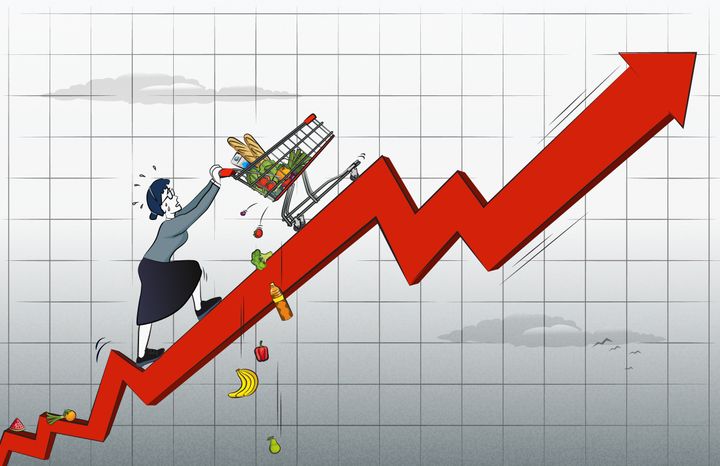
Global Inflation Predictions 2024, the rate at which the general level of prices for goods and services rises, is a critical economic indicator that profoundly impacts consumers, businesses, and policymakers worldwide. In recent years, the global economy has experienced a surge in inflation, driven by various factors ranging from supply chain disruptions to expansive monetary policies. This article aims to delve into the trends, drivers, and predictions 2024 surrounding the global inflation surge in 2024.
Understanding Inflation Dynamics
Before exploring the current trends and predictions, it’s essential to understand the fundamental drivers of inflation and how they shape economic outcomes predictions 2024.
Demand-Pull Inflation
Demand-pull inflation occurs when aggregate demand exceeds aggregate supply, leading to upward pressure on prices. Factors such as strong consumer spending, fiscal stimulus, and low unemployment rates can contribute to demand-pull inflation.
Cost-Push Inflation
Cost-push inflation arises from increases in production costs, such as wages or raw material prices, which are passed on to consumers in the form of higher prices. Supply chain disruptions, geopolitical tensions, and natural disasters can trigger cost-push inflation.
Monetary Policy
Central banks’ monetary policy decisions, including interest rate adjustments and quantitative easing measures, influence inflation dynamics by affecting borrowing costs, money supply, and aggregate demand.
Trends in Global Inflation
In recent years, the global economy has witnessed a resurgence of inflationary pressures, driven by a combination of supply chain disruptions, rising commodity prices, and accommodative monetary policies.
Supply Chain Disruptions
The COVID-19 pandemic exposed vulnerabilities in global supply chains, disrupting the flow of goods and leading to shortages of essential components and raw materials. These disruptions have contributed to supply constraints and upward pressure on prices across various industries.
Rising Commodity Prices
Escalating commodity prices, including energy, metals, and agricultural products, have fueled inflationary pressures worldwide. Factors such as supply disruptions, geopolitical tensions, and strong demand from emerging economies have driven commodity prices to multi-year highs.
Accommodative Monetary Policies
Central banks in major economies have adopted accommodative monetary policies predictions 2024, including near-zero interest rates and asset purchase programs, to support economic recovery amid the pandemic. While these measures have stimulated demand and investment, they have also raised concerns about inflationary risks.
Wage Pressures
Rising wages, driven by labor shortages and increased bargaining power among workers, have contributed to inflationary pressures in certain sectors. Companies facing higher labor costs may pass these expenses on to consumers through higher prices.
Predictions 2024
As we look ahead to 2024, several factors are expected to shape the trajectory of global inflation, presenting both challenges and opportunities for policymakers and businesses alike.
Continued Supply Chain Challenges
Supply chain disruptions are likely to persist in predictions 2024, albeit to a lesser extent than during the peak of the pandemic. Efforts to diversify supply chains, enhance resilience, and invest in digitalization may help mitigate the impact of disruptions on inflation.
Geopolitical Uncertainties
Geopolitical tensions, trade disputes, and regional conflicts pose risks to global supply chains and commodity markets, potentially exacerbating inflationary pressures. Diplomatic efforts to de-escalate conflicts and promote multilateral cooperation are essential for mitigating these risks.
Central Bank Policy Normalization
Central banks are expected to gradually normalize monetary policy in response to rising inflationary pressures. This may involve raising interest rates, reducing asset purchases, and signaling a more hawkish stance to anchor Global Inflation expectations and prevent overheating.
Impact of Climate Change
Climate-related events, such as extreme weather events and natural disasters, can disrupt agricultural production, drive up food prices, and exacerbate inflationary pressures. Adaptation and mitigation strategies are needed to address the economic consequences of climate change.
Conclusion Global Inflation
Global Inflation Predictions 2024 reflects a complex interplay of supply and demand dynamics, monetary policy responses, and external shocks. While inflationary pressures pose challenges for consumers, businesses, and policymakers, they also present opportunities for innovation, resilience building, and sustainable growth. By closely monitoring inflation trends, addressing structural vulnerabilities, and implementing appropriate policy measures, stakeholders can navigate the inflationary environment and promote economic stability and prosperity in the years ahead.
